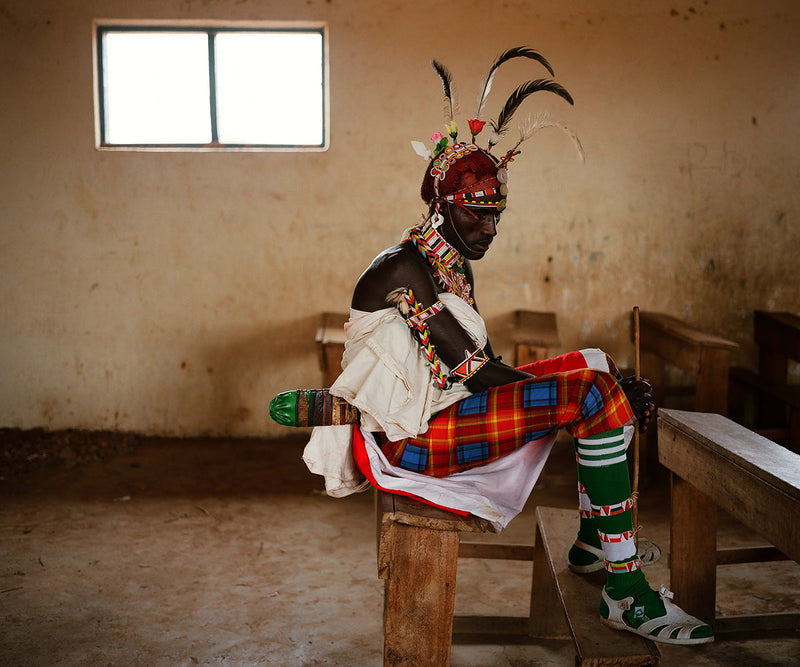
Open Edition - A Samburu moran shelters from the rains in a school room, northern Kenya
David Chancellor
I’ve worked with the Samburu here in northern Kenya for many, many years now, and witnessed two generations of their metamorphosis from boys to men.
I was deeply honoured to be asked recently to support one such boy through his initiation; an experience that is seared into my very being. During this time, the changes they’ve witnessed to their environment have been immense — changes that I’ve also witnessed.
What was a pristine landscape is now torn into strips like raw silk by roads and power lines, with more to follow. I often wonder if their culture is strong enough to survive such changes — and yet still embrace the future. Legend has it that long, long ago, the Maa-speaking people were moving southwards with all their many, many cattle. They came down the western shore of Lake Turkana.
As they neared the southern tip of the lake, one of the elders had a dream. In it, he saw a larger-than-life red bull that spoke to him. The bull said that if the people followed it, it would lead them to good green pasture.
In the morning, the elder related his dream to the other elders. Dreams are always taken seriously, but it seemed the elders could not reach a consensus. Some decided to follow the red bull, whilst others were against what the bull advised. Those who followed the red bull found their way eastwards into the Karisia Hills, a land of many trees and good green grass.
They became the Samburu of today, occupying the region of Kenya that still forms their territory. Those who rejected the advice of the red bull continued in a southward direction. They are called the Maasai. I work now with these magnificent people with the full knowledge that everything I write here, and share with the rest of the world, I can now also share with them.
Sitting drinking tea and watching the day’s ceremonies on the warriors smartphones hopefully also offers another kind of opportunity to them, and presents them with the means to protect their extraordinarily precious culture, and not isolate them from the rest of the world.
The Print
A series of limited open-editioned, unsigned digital c-type prints are as sized below. These are in an edition of 100 prints per image.
C-type (Matt) Edition of 100 in total
Paper: 12 x 10 Image: 10 x 8
Price: UKP 100.00 plus VAT and shipping.